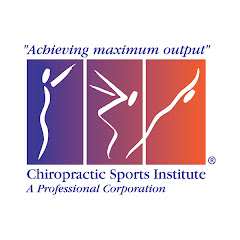By: Dr. Terry Weyman
I have been seeing a lot more shoulder injuries in these past few months than I have seen in the past few years. One significant change I notice is the age of the athlete with these injuries. They are getting younger and younger. When researching patterns, I notice these younger athletes are playing their sports longer. In addition to regular practices, athletes have longer seasons (regular ball, fall ball, All-stars, club teams and travel teams) some even hiring private trainers in the off season. Kids are coming to the office with injuries not usually seen until college or professional level. We can use this knowledge for several purposes, recovery and avoidence. We can refocus our efforts for the long haul instead of the short gain, realizing that our kids have an entire life ahead and being the best NOW is just that, its NOW. BUT repetitive stress injuries are FOREVER.
With repetitive activities muscles will adapt and change. Patterns will be developed which can lead to injuries. Asymmetric (not even with the other shoulder) passive (non muscle use) shoulder (scapular) motion has been linked in ‘throwing’ athletes and may be a predisposing factor to injury. What does this mean? With the athletes shirt off grab his/her elbow and lift their arm out to the side and then again forward. Does their shoulder blade move the same on each side? With their arms at their side and forearms in front of them at 90 degrees, rotate their hands toward their belly and away (internal and external rotation). Do they move the same? Conditions such as labral and rotator cuff injuries have been linked with decreases in glenohumeral internal-rotation and increases in external-rotation motion. Also, decreased glenohumeral internal rotation is strongly associated with scapular dysfunction. The younger the athlete, the more ROM (range of motion) they should have, since younger athletes have more ligament laxity. IF they are showing tightness or restricted ROM, they are heading for an injury. Just as if one shoulder is much looser, this can also lead to injury.
If you notice that your athlete is showing restriction or excessive elasticity, stop their activity and get them on a scapular stability program to even them out before continuing. By working the scapula (shoulder blade), the shoulder will respond faster and be more stable. Once the Range of motions is equal, build the athlete back to competitive level. By keeping an eye on these structures you can decrease the risks that lead to shoulder injuries. I am always amazed that people will check, pre check and over check their vehicles looking for wear and tear to avoid costly repairs, but they do not do this with their bodies or their children’s bodies. In some sports I will see the parents spending hours and thousands of dollars on getting their equipment just right or perfectly balanced, yet their child walks around with a limp or has one shoulder higher than the other. It makes no sense at all! Machines can be replaced and bought; you only get one body- take good care of it!
Dr.Terry Weyman
www.gotcsi.com
Subscribe to:
Post Comments (Atom)


No comments:
Post a Comment